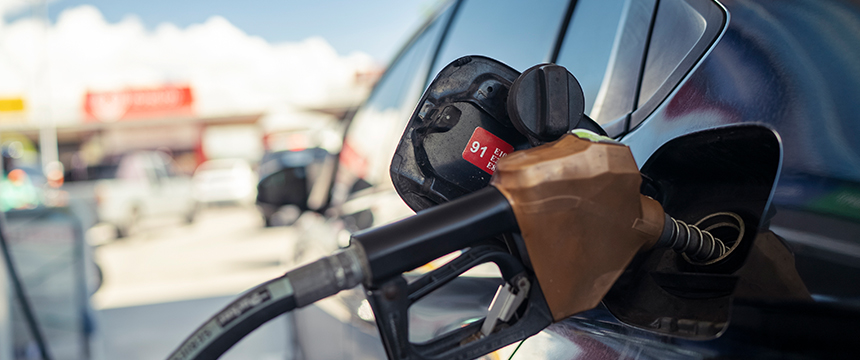
Increasing prices are on the minds of many. Price spikes have increased spending on housing, food, clothing, and more. Fuel prices—and especially gasoline for cars—are at the core of many of these increases. A lot of factors, though, have contributed to the need for more spending on fuel.
Gas prices were on the rise when the year began. On June 14, 2022, the average cost of a gallon of gasoline eclipsed $5 for the first time in history. Prices have dropped nearly a dollar since that date, with some projections guaranteeing further drops and others anticipating an increase within the coming months. It is easy to point fingers at a laundry list of possible causes: turmoil in Europe, lingering effects of the COVID-19 outbreak, or the tightening of the global supply chain in response to shortages. Others swear that inflation is solely to blame, and some skeptics are convinced that corporate greed within the industry is the actual cause.
Despite all these uncertainties, one thing is clear: fuel prices impact much more than the simple price consumers pay at the pump. Rising petroleum costs lead to corresponding increases across a variety of sectors and can affect Uber prices, the cost of airline tickets, and shipping times. Higher fuel costs have also threated longstanding industry practices, like the just-in-time (JIT) inventory management model, and can effectively tighten the global petroleum supply. Because fuel price fluctuations can affect so many other industries, it is important to identify the discrete factors that impact the price of gasoline.
First, the price of crude oil constitutes around 54% of the retail price of a gallon of gas. Because oil futures trade on a global commodities market, the fundamental economic principles of supply and demand drive the price of crude oil. Further, geopolitical instability can also impact the price of crude oil. Despite producing the most oil of any country each year, the United States is a net importer of petroleum. This makes the country especially sensitive to supply chain crunches or international sanctions on petroleum products stemming from foreign conflicts, like the conflict between Russia and Ukraine.
The next factor, comprised of federal, state, and local taxes make up around 16% of the retail cost of a gallon of fuel. Currently, the federal government charges an excise tax of 18.30 cents per gallon along with a 0.1 cent fee for federal storage. State taxes vary across jurisdictions, averaging around 31 cents per gallon at the start of 2022. Some state-imposed taxes vary drastically when compared to others. Consumers seeking to purchase a gallon of gas in California can pay up to $6 per gallon with a 57 cent state tax, for example, while Alaska only imposes a state gasoline tax of around 9 cents. Individual municipalities may also impose taxes on retail sales of gasoline, further increasing these disparities in prices.
The costs of refining crude oil makes up around 14% of the price paid at the pump. Refining costs can depend on a variety of factors, including the type of crude oil being used, the processing technology available at the refinery, and the specific fuel requirements imposed by given local and state governments. Refining costs are also seasonal, with summer months generally bringing higher costs. Unfortunately, U.S. petroleum refining capacity has lagged behind demand for years. This issue started well before the COVID-19 pandemic began, but supply chain issues and reduced workforce availability stemming from the pandemic have all exacerbated the capacity problem. Still, there have been very few new refineries opened in the United States since 1977. With many refineries either shutting down or switching to production of alternative fuel sources such as biofuels, refining capacity may continue to lag behind petroleum demand in the coming years. This drives the price of gasoline higher.
Finally, the costs of distribution and advertising constitute around 16% of the price of retail gasoline. After crude oil is refined into gasoline, it is shipped from the refineries to local terminals through pipelines. Then, the gasoline may be blended with other products, like ethanol, to meet local regulations. Retail gasoline is ultimately distributed to individual gas stations by tanker truck. Each step in this distribution process adds additional costs that the consumer ultimately bears at the pump. On the advertising side, costs may vary based on the station owner’s chosen marketing strategy. Station owners face a number of additional costs, which include salaries for employees, lease or rental payments, equipment costs, insurance, and more. These cost vary by station, season, and location, but many of these costs are passed on to the consumer at the pump.
Considering the variety of factors that influence retail gas prices, it can be difficult to identify the specific causes of a given rise or decline in costs. Rather than focusing on the ever-changing retail cost of gasoline, consideration of the other factors is most wise. The price of global crude is the main factor affecting retail gasoline prices so the price of West Texas Intermediate (WTI) crude prices, changes in U.S. production capacity and GDP, and global and domestic petroleum consumption patterns are most informative. Businesses should consider location-based factors affecting fuel prices, including state and local taxes and other regulations that add to overall costs. Business can also keep an eye on domestic refining capacity and global demand, along with any news on foreign conflict or other sources of geopolitical instability. It is impossible to determine whether fuel prices with rise or fall with a high degree of precision, but understanding what factors comprise the “price at the pump” can bring clarity to a dynamic situation and uncertainty rising costs bring.
